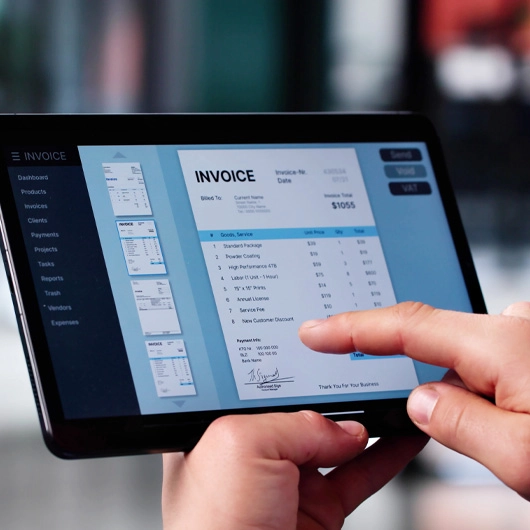Small Business Pricing: Tips for Getting It Right
Small Business Pricing: Tips for Getting It Right
Setting prices for goods or services is more than just a dollars-and-cents proposition for small businesses. While pricing most certainly makes a measurable impact on a business’s financial success, it can also play an important role in the company’s sales performance and brand identity.On the sales side, pricing can influence how many prospects you attract, what percentage of them you convert into customers, how much they spend with you and how long they remain loyal customers of your business. On the brand identity side, your pricing can influence public perceptions about your brand. For example, higher-than-average prices may connote higher or unique value, and thus a premier provider, while lower-than-average prices may suggest lower value or a company with a no-frills philosophy catering to cost-conscious buyers.
Give your pricing the attention it deserves. These tips may help you evaluate your pricing strategy today and determine whether it’s doing all it can to support your profit margins, sales and brand image:
Scout the competition
Researching what other companies are charging for similar products or services doesn’t just help you gauge what customers are willing to spend. It also provides you with insight into other companies’ strategic approaches and desired positions in the market. Are they vying for the low-cost-provider spot or trusting that customers will pay more for their brand? Seeing where your competitors land with their pricing can help you identify gaps and find the area(s) of greatest opportunity. A thoughtful pricing strategy can help your business stand out.
Know your customers
If you’ve conducted research into your customers’ needs, preferences, demographics, etc., this is a good time to revisit the results. Remind yourself why customers choose your brand. Try to understand what motivates them to buy. Gauge their price sensitivity. If you don’t have helpful research at hand, plan to send out a survey or organize some focus groups. Read customer reviews on your own and your competitors’ websites, too. The better you know your customers, the more likely you are to get your pricing right.Analyze your costs and margins
Define “healthy margin” for your business and then crunch the numbers to see how much you need to charge to hit that mark. If you’re selling a product, calculate all of the costs of manufacturing, marketing and delivering that product. If you’re selling services, incorporate the costs of developing and delivering those services. Build in the potential for product returns or guarantee/warranty fulfillment. Your pricing strategy should, at the very least, cover all of your costs plus your desired profit margin.Choose a pricing model
Once you have a good feel for your competition, customers and bottom line, study some pricing models to see if one of them may help you develop or refine your pricing strategy. There are a broad range of models to choose from. Following are some of the most common:Price Skimming. Businesses entering emerging markets may be successful setting prices high initially and then gradually lowering them as more competitors and customers enter the market. Electronics are a great example of where companies have used price skimming to their advantage. Early adopters will pay big money to be among the first to get the latest smartphone or tablet; once other companies launch their own versions, the excitement wanes and pricing needs to become more competitive.
Market Penetration Pricing. Conversely, market penetration pricing starts low and builds, giving newcomers to a market the opportunity to undercut their competitors to gain market share. Once they’ve won customers over and earned their trust, they can gradually raise their prices to be more competitive.
Premium or Value-based Pricing. Luxury or “lifestyle” brands, as well as one-of-a-kind products, can often command higher prices than those with lower perceived value. Brand-building is an essential element of this pricing model, as customers must recognize and embrace the higher value before they will agree to pay more.
Economy Pricing. At a time like this, when inflation is an everyday concern and customers are looking to save just about anywhere they can, it may be tempting to offer them the lowest possible price. Economy pricing can be tough for small businesses to pull off, though, since they don’t benefit from the economies of scale that larger competitors do. Economy pricing can also leave you vulnerable to price undercutting by larger competitors, particularly if customers have come to view your offering as a commodity.
Dynamic Pricing. Airlines were among the first corporations to recognize that customers will pay more for a service during times of high demand. That dynamic pricing model has spilled into the broader marketplace, as many businesses now have policies for changing prices in sync with fluctuations in demand, whether seasonal or otherwise. In addition to formal pricing models, you can consider building other strategies into your pricing approach. You may want to try bundling products, for example, to give customers a better deal when they purchase in multiples. Many businesses also offer limited-time promotional pricing, which can drive traffic during lulls as it increases the perceived value customers receive.
Build your pricing strategy into your culture
Your pricing is an important part of your company culture. Make sure that every employee understands and can communicate why any particular product or service costs what it does. They should be able to explain the benefits and unique features that differentiate your brand from competitors’ brands. When your entire team embraces what your company brings to the market, they can be proud to be part of such a trustworthy enterprise and help customers fully appreciate the value you deliver.This article is for general information purposes only and is not intended to provide legal, tax, accounting or financial advice. Any reliance on the information herein is solely and exclusively at your own risk and you are urged to do your own independent research. To the extent information herein references an outside resource or Internet site, Dollar Bank is not responsible for information, products or services obtained from outside sources and Dollar Bank will not be liable for any damages that may result from your access to outside resources. As always, please consult your own counsel, accountant, or other advisor regarding your specific situation.
Posted: March 13, 2023




